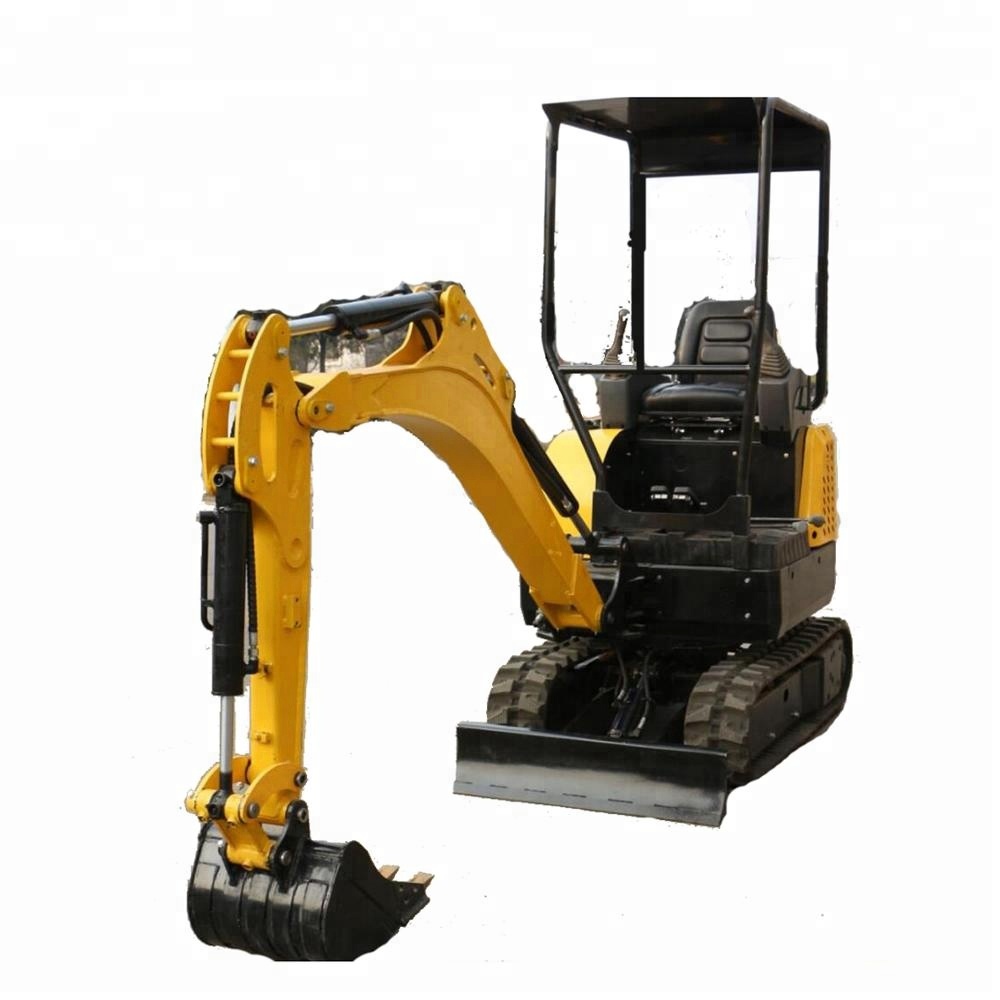Excavators have been in use in large and small scale constructions. Excavator technology is improving on an almost daily basis. Whether it is asphalt compactors or soil compactors, the thrust from manufacturers has been on machines that will achieve optimum compaction with the minimum number of passes. The trend that has been witnessed in the Indian compaction market is the movement towards vibratory compaction from the earlier predominantly static rollers. Manufacturers are also incorporating more sophisticated hydraulic functions that allow the operator to adjust hydraulic flow to the application. Manufacturers are also incorporating more sophisticated hydraulic functions that allow the operator to adjust hydraulic flow to the application. In the light of road projects and initiatives being declared by the government, the excavator market is foreseeing an uprising demand.
Given below are a few of the key trends in the excavator market.
Excavator propelled by hydraulic power
Hydraulic excavators find applications in mining, infrastructure and other similar sectors. Modern hydraulic excavators come in a wide range of sizes. The new hybrid models now manufactured has the lowest ever fuel consumption and has also been designed to further reduce CO2 emissions and running costs. Incorporating proven technology, an advanced hydraulic system and a new lightweight arm, it achieves this without compromising on high levels of performance and easy operation. One of the key benefits of hydraulic machinery is the ability to achieve motion via hydraulic actuators such as cylinders and swing motors. Through the use of multiple actuators, extremely complex motions are made possible. And with hydraulics providing the power behind these motions, machines like excavators can dig deeply into the earth or front loaders can scoop, lift up, and deposit heavy loads of soil or rock. And hydraulics, coupled with a skilled operator, can achieve motion to an amazing degree of precision. Modern graders with hydraulic systems are capable of far greater accuracy than their cable, winch, and linkage operated ancestors. And when hydraulics are combined with modern technology such as grade control, laser positioning, and GPS, the potential seems almost endless. The vast majority of equipment found on construction sites across the world is propelled by hydraulic power. That includes hydraulic final drive motors that convert hydraulic power to torque to enable track loaders, bulldozers, diggers, and backhoes to carry or push heavy loads. These motors, which are sometimes referred to as track motors, enable tracked excavators, bulldozers, and other tracked machines to keep moving across some of the most difficult surfaces imaginable. These hydraulic propelled motors rely on the machine’s hydraulic system to function correctly.
Advanced hydraulics excavator technology
Hydraulic excavator capabilities have expanded far beyond excavation tasks with buckets. With the advent of hydraulic-powered attachments such as a breaker, a grapple, or an auger, the excavator is frequently used in many applications other than excavation. Many excavators feature a quick coupler for simplified attachment mounting, increasing the machine’s utilization on the jobsite.
Manufacturers are also incorporating more sophisticated hydraulic functions that allow the operator to adjust hydraulic flow to the application. Hydraulic upgrades on the latest models include selectable modes to optimize available hydraulic speed and power, plus a manual throttle dial to adjust engine speed and power as needed. Hydraulic efficiency has been a big concentration point for manufacturers. Efficiency is a result of improved system designs that are capable of higher pressure, increased cooling and optimized use of the available oil flow. The lower engine horsepower found in some machines has also created a need to do more with less, making more efficient hydraulics a requirement.
Excavator operational safety
Excavators should be equipped with adequate visibility aids to ensure drivers can see areas where people may be at risk from the operation of the machine. An operator’s efficiency is paramount with regard to optimising the output. Comfort and safety of an operator are of paramount importance as it not only ensures safe operations at the construction site but also increases the efficiency of the operator. Excavators are now provided with isolated operator platforms where there is no feeling of vibration of the machine. This improves the stress-free operation of the machine & improves the operator’s efficiency.
Excavators are now being built with the patented design of three-point pendulum articulated joints. Operator efficiency is improved by the isolated operator platform, by providing comfortable seats that will help operators to have better stability. A conveniently positioned control on the operational panel is being attached now which allows easy switching of work modes, depending on working conditions. The steering wheel and console are designed to ensure fatigue-free operation and The cab platform is mounted on viscous mounts, to isolate it from any vibrations and to make the operator feel comfortable even during high amplitude passes.
Operator-friendly language in excavators
Buyers have become more educated and demanding in terms of wanting machines suited to the kind of work and environment that they work in. Customisations have to be in sync with the market and the on-ground realities for making the most of it. A country like India where there is no unifying language and different languages are spoken in every district and state, it becomes counterproductive to have all instructions about the machine in a single language. This simple customisation helps interact better with the operator. So customisation of voice recognition systems is mandatory in this part. Not only in language, but simple software customisation also helps keep a log of the machine’s data for future reference. It also helps keep track of the machine’s numbers in terms of efficiency and fuel consumption. The customised software helps run troubleshooting and diagnostic measures to ensure the safety and efficacy of the machines. The manufacturers are now customising machines as per the need of a particular terrain.
Smart technology in excavator
There is an adaptation of control methodology in relation to accuracy, repeatability, and efficiency. Manufacturers are using modified mechanisms and electrical sensors to ensure safety guidelines. There is a definite shift towards the adoption of newer technologies for industries as well which can be seen in specifically in the crane system modulation. The Internet of Things (IoT) is one of the hottest topics in the construction sector and with good reason. It influences the interaction of technological, economic, social, societal, and individual changes.
IOT is being implemented in construction for data gratification and safeguarding of products. Manufacturers are now leveraging digital technology by integrating Big Data and the Internet of Things in its products and services. The new range of intelligent machines exhibits the blend of technology and digital innovation to meet the demand for world-class machines to build India’s Next-Gen Infrastructure. They are all aimed at improving the overall customer experience by providing all the important information in real-time.
Mini excavator used for a slew of different tasks
Along with the ever-demanding big projects, there is always a need to work on small sites, which frankly could be a bit costly at times. In this regard, Mini excavators are becoming increasingly popular. The midsize machines these mini excavators borrow features from both the big and small class machines. Features like hydraulic quick attach, enclosed cabs with heat and air conditioning, rubber over steel tracks have come down from the bigger machine class while the backfill blade, center pivot boom and zero tail swing design are features that have migrated up from the smaller diggers. The compact size of the machines means that the machine can be operated in cramped spaces with less moving space. It is a lot easier using this machine at busy places like roadways, in small alleys, near houses, buildings and other infrastructure etc. The machine works well in places where it’s bigger counterparts cannot work well due to the size and the smaller ones due to lack of power.
The mini excavator provides various attachment options making the machine more versatile. Given the fact that this machine pumps more hydraulic fluid per minute, the machine can operate with a number of attachments, especially larger buckets thereby improving cycle time and overall productivity. One of the major draws of mini excavators is that you can use them for a slew of different tasks. The sheer number of possible attachments and the light frame are what make the mini excavator such a versatile machine.

Efficient fuel consumption of excavators
Modern excavator design is not just about productivity, ease of service and maintenance and fuel efficiency. manufacturers are also putting more and more effort into improving operator comfort and making machines easier to use. Fuel is one of the largest expenses for most construction companies. Modern manufacturers have fitted their machines with fuel-saving technology and offer many different fuel-saving services. Reducing fuel consumption by improving efficiency not only saves money for companies but also helps reduce their impact on the environment. Every litre of diesel fuel saved means there is 2.6kg less carbon dioxide released into the atmosphere.
Machines are now using the auto engine shutdown feature. It operates much in the same way as the auto-idle feature. Instead of switching to idle mode, the machine’s engine will shut down after five minutes of inactivity. After four minutes of inactivity, the machine will give a 60-second warning that the engine will shut down. After the sixty-second period is up, the machine’s engine will switch off. This feature helps to cut down on emissions when the machine is idle. A machine can be left idle 40-60% of operating time which contributes significantly to fuel consumption. Excavator manufacturers are continually trying to improve their machines to reduce operating costs and improve fuel efficiency. A key focus has been getting maximum production out of the machine. “We always try to maximize cubic yards per hour.
Conclusion
Every manufacturer is updating its excavator models and trying to come up with a more intelligent automation system than the previous model of the same. Newer excavator models typically offer gains in both fuel efficiency and productivity. The interesting trend that market players are seeing is that the sizes of the machines which are popular are now becoming larger in size, so the market is definitely moving towards larger machines. This demand for bigger machines is directly related to the larger infrastructural projects declared. But there are scopes for smaller projects as well, like the rural road program, swachh bharat abhiyan, or like semi-urban infrastructure or building of schools or medium to small scale projects the traditional machinery works really well. The demand for the excavator is underpinned by several macro and microeconomic factors impacting the sectoral growth across various countries. It really comes down to the individual owner and what they’re looking for. Are they looking for pricing? Are they looking for fuel-efficiency? Are they looking for operating costs over the lifespan of the machine? Or are they driven by brand loyalty?


